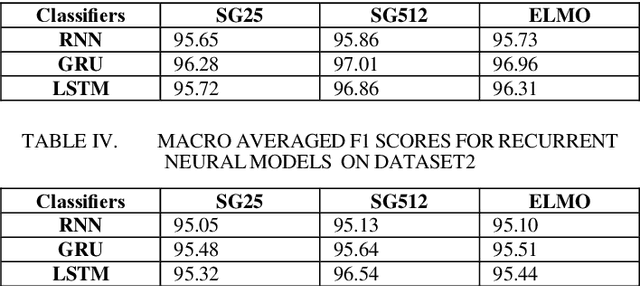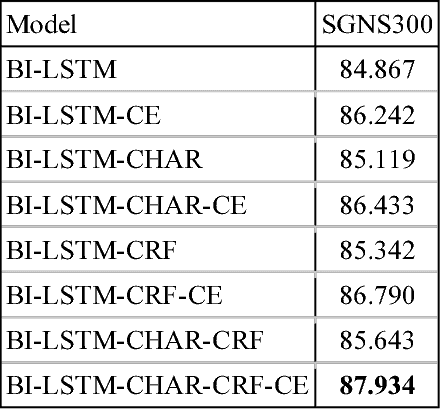Pratik Jayarao
Shopping MMLU: A Massive Multi-Task Online Shopping Benchmark for Large Language Models
Oct 28, 2024



Abstract:Online shopping is a complex multi-task, few-shot learning problem with a wide and evolving range of entities, relations, and tasks. However, existing models and benchmarks are commonly tailored to specific tasks, falling short of capturing the full complexity of online shopping. Large Language Models (LLMs), with their multi-task and few-shot learning abilities, have the potential to profoundly transform online shopping by alleviating task-specific engineering efforts and by providing users with interactive conversations. Despite the potential, LLMs face unique challenges in online shopping, such as domain-specific concepts, implicit knowledge, and heterogeneous user behaviors. Motivated by the potential and challenges, we propose Shopping MMLU, a diverse multi-task online shopping benchmark derived from real-world Amazon data. Shopping MMLU consists of 57 tasks covering 4 major shopping skills: concept understanding, knowledge reasoning, user behavior alignment, and multi-linguality, and can thus comprehensively evaluate the abilities of LLMs as general shop assistants. With Shopping MMLU, we benchmark over 20 existing LLMs and uncover valuable insights about practices and prospects of building versatile LLM-based shop assistants. Shopping MMLU can be publicly accessed at https://github.com/KL4805/ShoppingMMLU. In addition, with Shopping MMLU, we host a competition in KDD Cup 2024 with over 500 participating teams. The winning solutions and the associated workshop can be accessed at our website https://amazon-kddcup24.github.io/.
Retraining DistilBERT for a Voice Shopping Assistant by Using Universal Dependencies
Mar 29, 2021



Abstract:In this work, we retrained the distilled BERT language model for Walmart's voice shopping assistant on retail domain-specific data. We also injected universal syntactic dependencies to improve the performance of the model further. The Natural Language Understanding (NLU) components of the voice assistants available today are heavily dependent on language models for various tasks. The generic language models such as BERT and RoBERTa are useful for domain-independent assistants but have limitations when they cater to a specific domain. For example, in the shopping domain, the token 'horizon' means a brand instead of its literal meaning. Generic models are not able to capture such subtleties. So, in this work, we retrained a distilled version of the BERT language model on retail domain-specific data for Walmart's voice shopping assistant. We also included universal dependency-based features in the retraining process further to improve the performance of the model on downstream tasks. We evaluated the performance of the retrained language model on four downstream tasks, including intent-entity detection, sentiment analysis, voice title shortening and proactive intent suggestion. We observed an increase in the performance of all the downstream tasks of up to 1.31% on average.
Intent Detection for code-mix utterances in task oriented dialogue systems
Dec 07, 2018


Abstract:Intent detection is an essential component of task oriented dialogue systems. Over the years, extensive research has been conducted resulting in many state of the art models directed towards resolving user's intents in dialogue. A variety of vector representations foruser utterances have been explored for the same. However, these models and vectorization approaches have more so been evaluated in a single language environment. Dialogude systems generally have to deal with queries in different languages. We thus conduct experiments across combinations of models and various vectors representations for Code Mix as well as multi language utterances and evaluate how these models scale to a multi language environment. Our aim is to find the best suitable combination of vector representation and models for the process of intent detection for Code Mix utterances. we have evaluated the experiments on two different datasets consisting of only Code Mix utterances and the other dataset consisting of English, Hindi and Code Mix English Hindi utterances.
Exploring the importance of context and embeddings in neural NER models for task-oriented dialogue systems
Dec 06, 2018

Abstract:Named Entity Recognition (NER), a classic sequence labelling task, is an essential component of natural language understanding (NLU) systems in task-oriented dialog systems for slot filling. For well over a decade, different methods from lookup using gazetteers and domain ontology, classifiers over handcrafted features to end-to-end systems involving neural network architectures have been evaluated mostly in language-independent non-conversational settings. In this paper, we evaluate a modified version of the recent state of the art neural architecture in a conversational setting where messages are often short and noisy. We perform an array of experiments with different combinations of including the previous utterance in the dialogue as a source of additional features and using word and character level embeddings trained on a larger external corpus. All methods are evaluated on a combined dataset formed from two public English task-oriented conversational datasets belonging to travel and restaurant domains respectively. For additional evaluation, we also repeat some of our experiments after adding automatically translated and transliterated (from translated) versions to the English only dataset.
 Add to Chrome
Add to Chrome Add to Firefox
Add to Firefox Add to Edge
Add to Edge